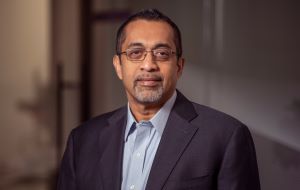
Ravi Gopinath, Chief Cloud Officer & Chief Product Officer from AVEVA, showcases cities that have improved their sustainability and resilience while lowering costs.
There is a growing trend towards cities becoming ‘smart’ and an increasing demand for centralised Command and Control Centres. The Smart City concept integrates information and communication technology (ICT), and various physical devices connected to the IoT network to optimise the efficiency of city operations and services and connect to citizens.
Smart cities in an advanced material world
ICT is used to enhance quality, performance and interactivity of urban services, to reduce costs and resource consumption, and to increase contact between citizens and government. However, the sheer complexity of disparate data silos, multi-vendor system architectures, and the many millions of citizens relying on their infrastructure to participate in an economically viable solution remains a genuine challenge.
The appetite to explore the benefits of Smart Cities is also driven by urbanisation, as many cities have old and aging infrastructure with high replacement costs. Converting existing infrastructure to Smart Infrastructure is key to improving cities, as it directly correlates to improvements in the sustainability and quality of life.
Cities must be vigilant to ensure their data systems are secure from cyber-attacks
City resilience reflects the overall capacity of a city (individuals, communities, institutions, businesses and systems) to survive, adapt and thrive. To help quantify a city’s resilience capability, Arup and the Rockefeller Foundation partnered to develop the City Resilience Index (CRI), a quantitative measure of this capacity. The CRI provides a holistic articulation of city resilience, structured around four dimensions, 12 goals and 52 indicators that are critical to measuring the resilience of our cities.
When most people think about city resilience, their minds often turn to topics like sustainable design, city planning, redundant infrastructure and emergency management services. Recently, London mayor Sadiq Khan announced the UK capital’s first-ever resilience strategy, which was developed as part of the global 100 Resilient Cities Project. The strategy highlights new threats to the city’s safety and stability, including extreme weather events that lead to flooding and drought.

AVEVA works with megacities like London, as well as smaller municipalities with populations of 50,000 or fewer, that are looking to leverage technology to help improve their sustainability and resilience. Some examples include:
India: The city of Nava Raipur proudly proclaims itself as India’s first greenfield Smart City. Designed and built from the ground up using the latest technology, Nava Raipur has implemented a centralised command and control centre which can streamline communications, improve collaboration and make multi-stakeholder decision-making faster and more informed. Nava Raipur’s control centre now integrates its smart governance system, intelligent transport system, utility management system, city surveillance system, intelligent building management system, and smart network and data centre through a ’single-pane-of-glass’ interface.
UK: Anglian Water’s implementation of an Integrated Leakage and Pressure Management (ILPM) solution has helped this UK water utility increase its sustainability and mitigate drought conditions and water scarcity by reducing water waste. The system is able to detect and predict leaks, so the utility can respond proactively based upon data, instead of waiting for a service interruption to alert it to a potential problem. By minimising water leakage, Anglian Water can ensure that more of its treated water reaches customers, allowing the company to treat less and preserve more of the natural resources available to its community.
Germany: Approximately 40 per cent of our total energy use comes from heating, cooling and operating buildings. So, when the City of Bremen in Germany was looking to standardise the way it manages the buildings within its purview to reduce energy consumption, it sought to implement a common building management system for all of its properties. By centralising building control and implementing best practices among all property managers, Bremen was able to save between 15 and 18 per cent on its annual power bills, effectively lowering the overall carbon footprint of the city.
United States: Also worried about how they maintain critical utility infrastructure, the San Francisco Public Utilities Commission (SFPUC) implemented a risk-based maintenance strategy to assess which of its infrastructure was most critical and warranted the greatest focus from its asset optimisation strategy. Using our asset libraries, containing over 20 years of reliability data, AVEVA helped the SFPUC perform the analysis and implement its findings. Our recommendations addressed the most critical risks and maintenance issues and predicted that SFPUC could benefit from a 25 per cent reduction in maintenance hours every year, while maintaining the same service levels and recovery times it experienced prior to the optimisation.
These projects rely on digital transformation to provide operational improvements and enhanced intelligence. But with increased connectivity and data-sharing, cities must also be vigilant to ensure their data systems are secure from cyber-attacks.
Transformation is hard. Success requires real commitment and engagement from the top, but the rewards are impactful for individuals, communities and the planet. However, in the increasingly complex world of infrastructure, technology is a powerful unifying asset. A holistic command and control centre based on an integrative approach can be extremely effective in leveraging information, resolving problems and helping to make more strategic decisions.
Ravi Gopinath is Chief Cloud Officer & Chief Product Officer at AVEVA




Swiss geoengineering start-up targets methane removal
No mention whatsoever about the effect of increased methane levels/iron chloride in the ocean on the pH and chemical properties of the ocean - are we...